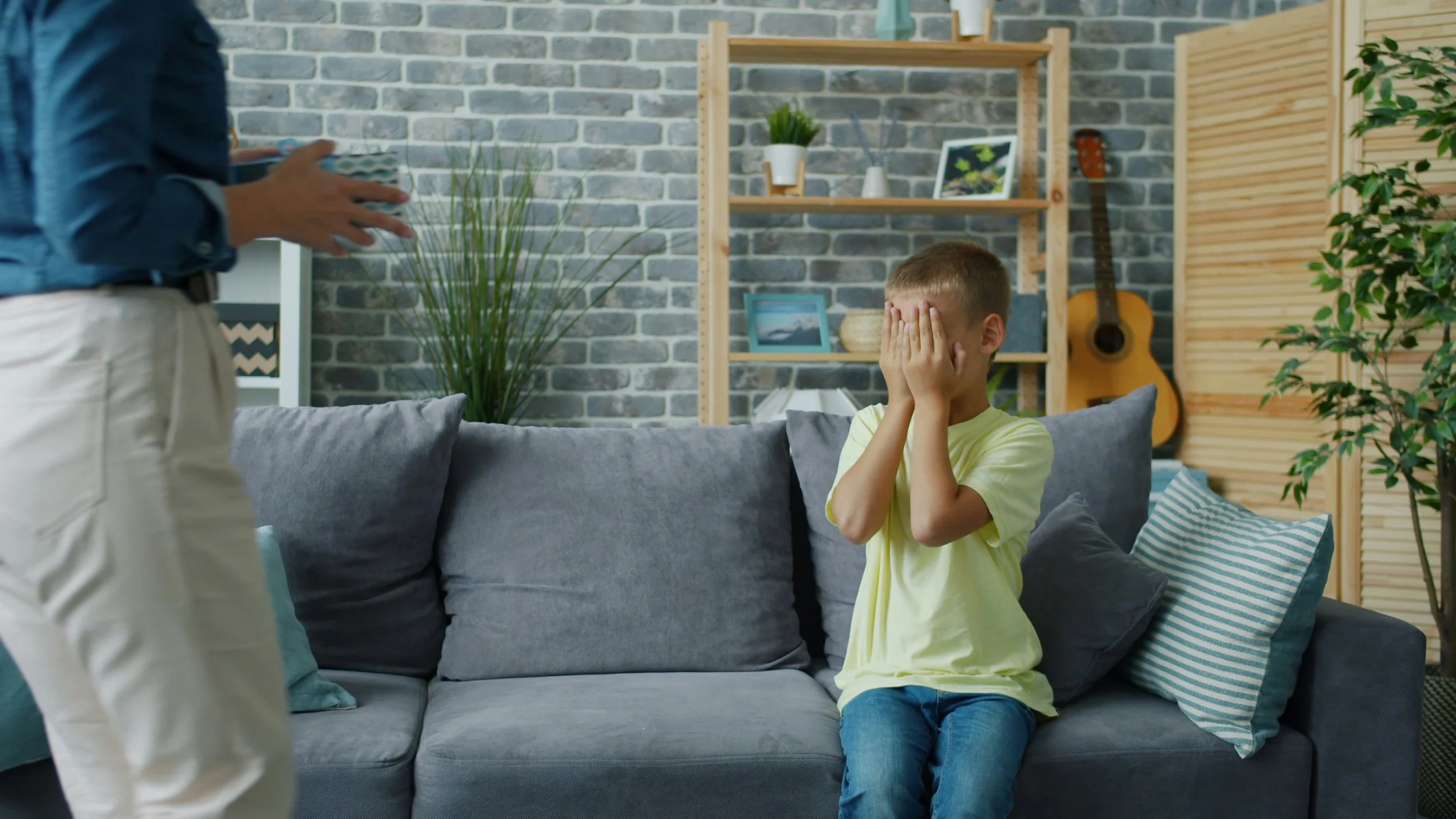Why Punishment Doesn’t Work
There are a million reasons why we discipline our child. One big one... We don’t want them to be spoiled brats, and we believe punishment will teach them best.
We want them to be good listeners in school and respect their teachers. We want them to get along with their siblings and not instigate fights. We want toddlers not to throw toys and for our child to do chores and remember to throw out the garbage. As parents it’s natural to want to correct our children’s behavior when they act out. But instead of asking, “How do I make this stop!?” a more powerful question is, “What do I want my child to learn from this?” When we shift from punishment to teaching, we transform discipline into a tool for growth, for learning.
Whether your child is two years or 15 years old, discipline through punishment fails to correct behavior. Positive parenting offers teaching in a way that makes a difference.
Punishment is a retribution, while teaching helps our child learn to correct and change their behavior. Punishment creates fear using a tactic that is ultimately ineffective in the long run. Fear can teach our child to hide, while teaching has them own their mistakes and change.
The Problem with Punishment
Traditional discipline methods like time-outs, grounding, or taking away privileges may stop unwanted behavior in the short term, but they don’t address the root cause and certainly does not change behavior. Instead, punishment can create fear, dread, shame, or resentment—damaging the parent-child connection. Punishment focuses on control, while teaching fosters understanding and responsibility.
Punishment and harsh punishment like spanking, (which is never the right approach,) creates more anger, increases aggression, instills lying, and teaches to use force to get what you want. Punishment like spanking and shaming, normalizes aggressive behavior and erodes self esteem and erodes the parent child relationship. Punishment teaches our child to hide from us.
Why Teaching Works Better
When we replace punishment with guidance, using positive discipline, we help our child develop problem-solving skills, grow their emotional regulation, and empathy. Teaching our child nurtures their ability to make better choices because they understand why certain behaviors are hurtful or inappropriate—not just that they’ll get in trouble for them. Teaching and modeling positive behavior increases motivation to do better next time. Your toddler threw a car at their sibling. With a firm tone, ”Cars are for pushing. No throwing.” If the behavior continues, it’s “Bye bye car for today.” Simple language using very few words, that connects to the moment.
How to Shift from Punishment to Teaching
1. Regulate Your Own Emotions First
Children learn best in a calm, connected environment. If you’re feeling frustrated, take a deep breath before responding. Your ability to stay regulated models the self-control you want to teach.
2. Focus on Connection Before Correction
Before addressing the behavior, make sure your child feels seen and heard. Acknowledge their feelings: “I see that you’re upset. I’m here to help.” When kids feel emotionally safe, they are more open to learning. Really listen to their side of the story without interrupting or correcting them.
3. Use Natural and Logical Consequences
Instead of arbitrary punishments, allow consequences that make sense. If your child refuses to wear a coat, they will feel cold. If they make a mess, they help clean it up. If they throw a toy, it gets put away. These real-world connections help children take responsibility in a meaningful way that makes sense right then and there. Denying them dessert doesn’t teach. It’s a misstep that leads to confusion and eventually to a “I don’t care.” Restricting or limiting screens and devices is a natural consequence when HW is missed or when it’s HW time.
4. Teach Problem-Solving Skills
Rather than punishing, help your child brainstorm solutions. If they hit a sibling out of frustration, guide them toward alternatives: “Next time you feel mad when Sienna uses your hairbrush, what else can you do?” This helps them build emotional intelligence and conflict resolution skills.
5. Model the Behavior You Want to See
Children learn by watching us. If we react with anger, they will, too. If we respond with patience and empathy, they will learn to do the same. Show them what kindness, accountability, and self-regulation look like. Like all behavior, it starts with us.
The Long-Term Impact of Teaching Instead of Punishing
Replacing punishment with teaching isn’t about letting kids “get away” with bad behavior. It’s about guiding them toward better choices through connection and understanding. Over time, this fosters emotional resilience, mutual respect, and a deep trust between parent and child. Conscious parenting and positive parenting teaches us to look within and see our own behavior, see our own reactions, and to manage how we show up. Do we want to grow our relationship or create distance and fear with our child? If we want to teach honesty, ownership of mistakes and how to change and do it differently, then it starts with us, in our conscious parenting.
Parenting with love doesn’t mean ignoring behavior—it means addressing it in a way that helps our child grow. When we choose teaching over punishment, we empower our kids with the skills they need to thrive, not just obey.
What’s one way you can replace punishment with teaching in your home today? Let’s start the conversation! 💛
True learning happens when children feel safe enough to reflect, understand, and practice new ways of handling challenges. Growing Change Parent Coaching can help you learn how to change your parenting so your child learns how to change too.
